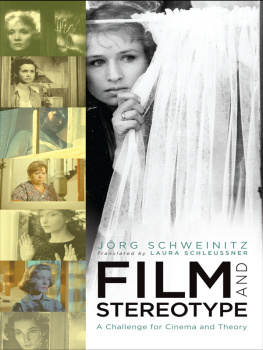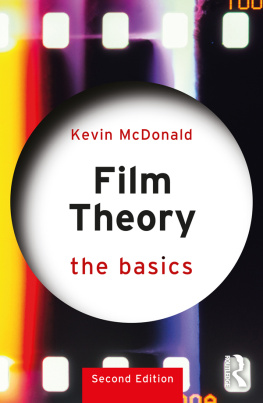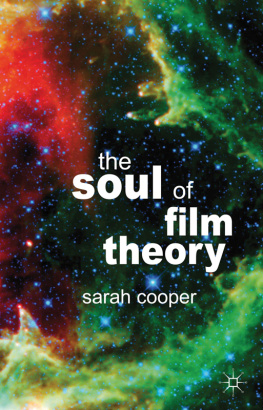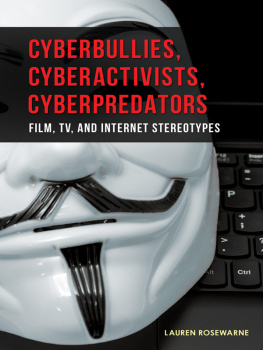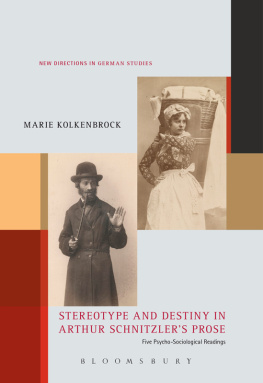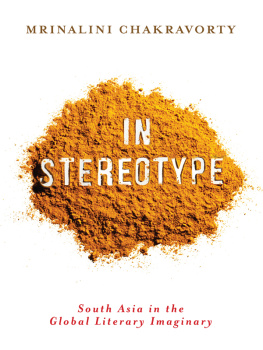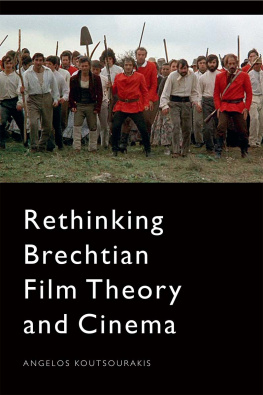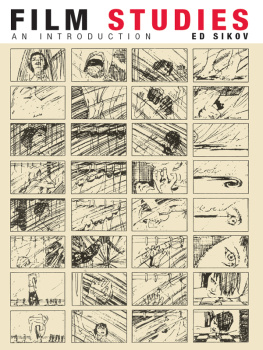FILM AND STEREOTYPE
FILM AND CULTURE SERIES

A Challenge for Cinema and Theory
J R G S C H W E I N I T Z
Translated by Laura Schleussner

Columbia
University
PRESS
NEW YORK
Columbia University Press
Publishers Since 1893
New York Chichester, West Sussex
cup.columbia.edu
Originally published by Jrg Schweinitz as Film und Stereotyp.
Eine Herausforderung fr das Kino und die Filmtheorie.
Zur Geschichte eines Mediendiskurses, copyright 2006
Akademie Verlag GmbH, Berlin.
Translation copyright 2011 Columbia University Press
All rights reserved
E-ISBN 978-0-231-52521-3
Library of Congress Cataloging-in-Publication Data
Schweinitz, Jrg
[Film und Stereotyp. English]
Film and stereotype : a challenge for cinema and theory /
Jrg Schweinitz ; translated by Laura Schleussner.
p. cm. (Film and culture)
Includes bibliographical references and index.
Includes filmography.
ISBN 978-0-231-15148-1 (cloth : alk. paper)
ISBN 978-0-231-15149-8 (pbk. : alk. paper)
ISBN 978-0-231-52521-3 (e-book)
1. Stereotypes (Social psychology) in motion pictures. I. Title.
PN1995.9.S6956S3413 2011
791.436552dc22 2010044342
Designed by Lisa Hamm
A Columbia University Press E-book.
CUP would be pleased to hear about your reading experience with this e-book at .
CONTENTS
Fictional film posters from Die Koffer des Herrn O.F. (Germany 1931)
Stereotypization of visual representation: views of the Castel SantAngelo in Rome
Facial expressions of horror (1886)
Gestures of horror (1886)
Study of facial expressions featuring Albert Bassermann
Conventional grand gestures of horror and desperation in Weihnachtsgedanken (Germany 1911)
Stereotypical film images: two series of images from Vladimir Nilsen; mother-and-child shots from three films of the 1930s; six close-ups from different American films
The ritual of driving in the spike as visual and narrative stereotype
The ritual of driving in the spike in the hybrid-genre film Wild Wild West (1999)
Adolf Behne refers in 1929 to this satirical series of images from Punch
The distraught hero on his way to leap off the skyscraper
Gesture of superiority: Katherine Hepburn and Jennifer Jason Leigh
Smoking as provocation: Katherine Hepburn and Jennifer Jason Leigh
Hectic activity at the typewriter: Rosalind Russell and Jennifer Jason Leigh
Fainting as pretense: Jean Arthur and Jennifer Jason Leigh
Isnt a stereotype a still image? Do we not have a dual relationship with platitudes: both narcissistic and maternal?
ROLAND BARTHES, UPON LEAVING THE MOVIE THEATER
The stereotype can be evaluated in terms of fatigue. The stereotype is what begins to fatigue me.
ROLAND BARTHES, ROLAND BARTHES
I n his film Die Koffer des Herrn O. F. (The Suitcases of Mr. O. F., Germany, 1931), Alexander Granowski presents an ironic fairy tale about the modern capitalism of the era and reflexively touches on the world of cinema. The director of a fictive film company explains his business strategy: Problems make you go broke. Comedies bring dividends. Why are we a world-class company? Because we produce comedies! I beg of you! A song follows, sung from off-screen, as a coloratura in the style of an operetta aria referring to the popular film genres of the period. Sound film comedies and sound film operettas (Tonfilmkomdien und Tonfilmoperetten, the German counterparts to the American film musical) always depicted the complications of a love story, and they did so with frequently recurring narrative and visual motifs. This is alluded to the lyrics from Granowskis film:
He loves,
she loves,
we love,
they love,
they all, all, all, all love.
While the song is sung, a series of six fictive film posters with extremely similar compositions appears on screen. All show an embracing couple from the waist up, the woman always holding a guitar. The motifs differ only in superficial detail, mostly in a different hat or pair of glasses.
The effect is immediately repeated, whereby the song, now sung to a marching rhythm, refers to the military comedies (Militrschwnke) popular in Germany at the time.
Barracks air,
Barracks smell,
Barracks magic.
Marching is such fun.
Another series of posters appears, each depicting an officer and a woman with a horse. These images too are almost identically composed and vary only in a few minor details, most obviously in the form of the helmets.
The current of filmic self-examination running through this sequence widely epitomized the contemporary discourses on cinema of German film critics and theorists around 1930. In this example, a motion picture from the period addresses a characteristic trend of its own medium. Only peripherally does it concern a satirical take on the cinematic glorification of military ritual, which was also ridiculed by the progressive film criticism of the time. First and foremost, the sequence from Granowskis film caricaturizes the stereotypization of film. This is perhaps the first time in the history of film that a motion picture explicitly conducts a brief reflexive discourse on this theme, which constitutes the main topic of this book.
Incidentally, in its satirical display of stereotypes the film employs the device of synchronic, intratextual serialization, a standard technique used for visual and self-referential representations of the phenomenon. This will be described in more detail further on.
Not even a decade prior to Granowskis persiflage of the film businesss repetitive and reductive compulsions, in the first half of the 1920s intellectual aficionados of cinema such as Bla Balzs had associated the medium with very different hopes and utopias. Euphoric ideas about the future of film as art were based on the idea that cinema was destined to cultivate a new visual culture: the long-deplored conventionality and abstraction (arising therefrom) of the culture of language and writingasserted under the banner of language skepticism (Sprachskepsis)could be overcome by the visual and concrete medium of film.
Toward the end of the decade, such euphoria had given way to disenchantment, including among film critics. Intellectual observers now became aware of the medium as an all the more powerful agent of the conventional. They now realized that conventionalization of cinema did not fail to affect the sphere of gestural and visual expression. Through the constant repetition of patterns reduced in complexity it standardized the imaginary of large masses of people, even on an international scope. Cinema tended to create globally widespread visual imaginations and forms of expression.

Series of fictional film posters from the motion picture Die Koffer des Herrn O. F. (The Suitcases of Mr. O. F., Alexander Granowski, Germany, 1931).
Fixed schemata were now observed everywhere in the worlds of narrative and in their visual composition. They reoccurred in extended series of films and were progressively automatized and conventionalized, thus becoming intersubjectively established. This concerned patterns of plot structure (including the macro- and microstructures of narrative) and character construction as well as patterns of acting, visual style, the combination of image and music, and so on. Around 1930, the great majority of German commenters massively criticized this trend, either from the standpoint of ideological critique or, predominantly, in terms of aesthetics and style.
Next page
